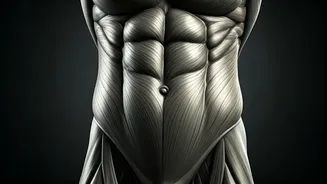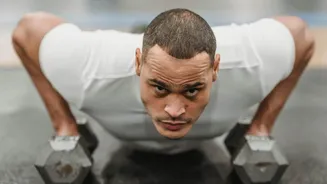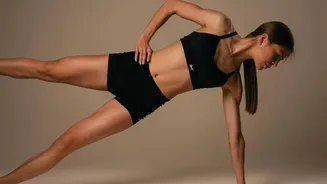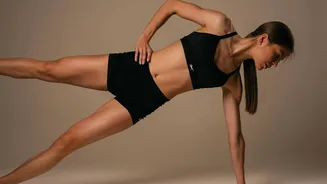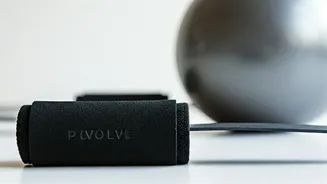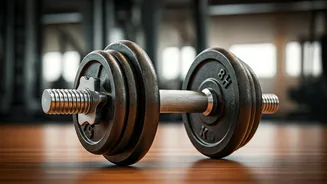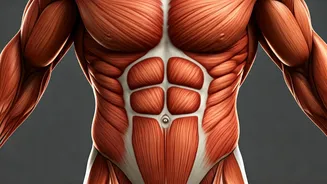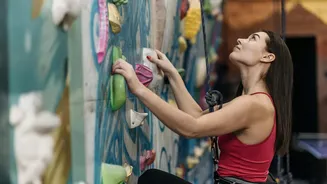Master the Basics
Building a solid core is about more than just aesthetics; it's fundamental to overall strength, stability, and injury prevention. Before diving into advanced
exercises, it's crucial to understand the fundamental principles. Start with exercises that emphasize proper form and control, such as planks, and gradually increase the difficulty by extending the time you hold the plank. Remember to engage your core muscles throughout each exercise, breathing deeply to maximize oxygen supply. By mastering these foundational movements, individuals can create a solid base upon which to build a stronger and more resilient core. Prioritizing technique over speed ensures that you are effectively targeting the desired muscles and preventing potential injuries.
Exercise: Hanging Knee Raises
Hanging knee raises offer a dynamic and effective way to engage the entire core. Begin by gripping a pull-up bar with an overhand grip, arms fully extended. Engage your core to stabilize your body and then initiate the movement by bringing your knees towards your chest. Ensure that you maintain control throughout, avoiding any swinging or momentum. For added challenge, try bringing your knees higher towards your elbows or even performing leg raises, where you keep your legs straight. This exercise targets the lower abs effectively while also engaging the obliques and other core stabilizers. To maximize results, focus on a controlled motion, avoiding excessive swinging, and consciously contracting your abdominal muscles. With consistent practice, you will notice significant improvements in core strength and definition.
Exercise: Russian Twists
Russian twists are a classic exercise that targets the obliques and promotes rotational core strength. Sit on the floor with your knees bent and feet slightly elevated. Lean back slightly, engaging your core to maintain a straight back. Hold a weight or medicine ball and rotate your torso from side to side, touching the weight to the floor on each side. Keep your core engaged throughout the movement, avoiding any slouching or excessive movement. For those seeking to increase the difficulty, the feet can be lifted off the ground. The key is to control the movement and feel the contraction in your obliques. This exercise is great for developing a strong core and improving your rotational stability, which is essential for various athletic activities.
Exercise: Plank Variations
Planks are a cornerstone of core training, and variations allow you to customize the challenge. A basic plank is performed by holding your body in a straight line from head to heels, supported by your forearms and toes. Start with the standard plank and work your way up to more advanced variations like the side plank, which intensely targets the obliques. Another effective variant is the plank with arm or leg raises. This involves holding the plank position while alternately lifting one arm or leg. Ensure that you maintain a stable core and minimize any rocking or twisting of the body. These variations not only strengthen your core but also improve your balance and overall body awareness. It’s also important to focus on engaging the core and maintaining proper form throughout, as it will yield superior outcomes.
Exercise: Cable Woodchops
Cable woodchops simulate the motion of chopping wood, providing a dynamic and functional core workout. Attach a rope or handle to a cable machine at a low setting. Stand with your side facing the machine, feet shoulder-width apart. Grasp the handle with both hands and pull the cable up and across your body, as if chopping wood. Engage your core to control the movement, avoiding any twisting of your spine. This exercise not only strengthens your core but also improves your rotational stability and coordination. To increase the challenge, select a heavier weight or maintain a slower, more controlled tempo. Doing cable woodchops on a regular basis will help you develop a strong core. In addition, it enhances your functional fitness and prepares you for everyday movements. Pay attention to form and maintaining proper technique during each repetition.
